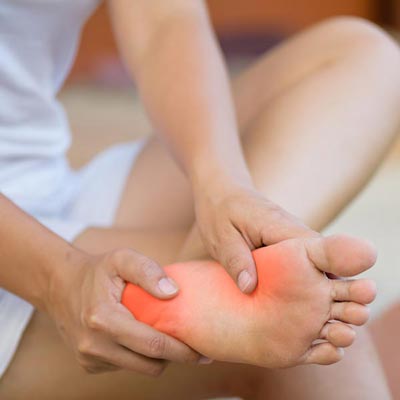Understanding Your Foot Bone: What You Need to Know
Do you know what the bones in your feet are, and how they function? Taking a better understanding of your foot bone is key to being proactive about keeping them healthy. In this blog post, you will have all the information needed to be an informed consumer in regards to foot bone health. By being aware of facts such as common injuries specific to different parts of the feet, treatment options that may be applicable, and reconstructive surgery (if necessary), now is as good a time as any to understand your own personal risk factors associated with unhealthy or fragile foot bones.
Overview of Foot Bones and Their Functions
The human foot is a complex anatomical structure made up of 26 bones, 33 joints, over 100 muscles, and numerous ligaments and tendons. Of these 26 bones, 14 are phalanges (toes) and the remaining 12 are tarsals. The tarsals include the calcaneus (heel bone), talus, navicular, cuboid, and three cuneiform bones (medial, intermediate, and lateral). The main functions of the foot bones are to provide support and stability for the body, absorb shock, and facilitate movement. The foot bones also play a crucial role in maintaining balance and proper posture. Having a thorough understanding of the foot bones and their functions can assist in diagnosing and treating a variety of foot and lower extremity conditions.
How Foot Bone Injuries Occur
Foot bone injuries can occur in many ways, and it’s essential to understand how they happen to prevent them from happening. Most foot-bone injuries are the result of trauma, such as falls, accidents, or sports-related injuries. Additionally, overuse and repetitive motions can also cause stress fractures and other foot-bone issues. It’s important to be aware of the signs and symptoms of a foot bone injury, such as swelling, pain, and difficulty walking. Seeking medical attention promptly is crucial to prevent further damage and ensure proper healing. By understanding how foot-bone injuries occur, we can take steps to prevent them and keep our feet healthy and pain-free.

Heel Pain
Treatment Options for Foot Bone Injuries
Foot bone injuries can be a painful and frustrating experience. However, there are treatment options available that can help alleviate your discomfort and get you back on your feet. Depending on the severity of your injury, your doctor may suggest a variety of options ranging from physiotherapy to surgery. Physiotherapy includes exercises and stretches that can strengthen the muscles and tendons surrounding the affected area, promoting faster healing. In cases where the injury is more severe, surgery may be recommended to fix fractures or other damage to the bones.
Prevention Tips to Avoid Injury
Injury prevention is key to maintaining our physical health. Whether you’re an athlete or just someone who enjoys exercising, taking measures to reduce the risk of injury is crucial. One effective strategy is to always warm up properly before any physical activity. This can include dynamic stretching or a light jog to help increase blood flow to the muscles. Additionally, being mindful of your posture and form during exercises can reduce the strain on your body and lower the chance of injury. Lastly, it’s important to listen to your body and not push yourself too hard. If you feel pain or discomfort, stop the activity and seek medical attention if necessary.
When to Seek Professional Medical Help for Foot Bone Problems
When it comes to foot-bone problems, it is important to understand the signs and symptoms that may require professional medical intervention. While mild discomfort and occasional soreness are common, persistent pain or discomfort should never be ignored. Additionally, any visible abnormalities such as swelling, redness, or changes in the shape or size of the affected foot should be evaluated by a medical professional. In some cases, foot bone problems can even cause difficulty walking or standing, which can drastically impact your daily life. If you are experiencing any of these symptoms, it is best to seek professional medical help as soon as possible to prevent the condition from worsening and to start on the road to recovery.
Foot bones are important parts of the body and should be treated as such. They enable us to stand, walk, and balance our bodies which is essential for daily life activities. It is important to understand the anatomy of the foot bones, recognize how injuries occur, and take preventive steps to avoid any future issues from occurring. When soreness or discomfort persists an individual should seek professional medical help in order to address any foot bone problems. With proper care and preventive measures, you can ensure your feet remain healthy and strong for years to come.

Foot Bone Problems
Flagstaff Foot Doctors: Anthony Rosales DPM
https://www.google.com/maps?cid=8835841318590452161
421 N Humphreys St, Flagstaff, AZ 86001, United States
(928) 774-4825
https://flagstafffootandankle.com/
